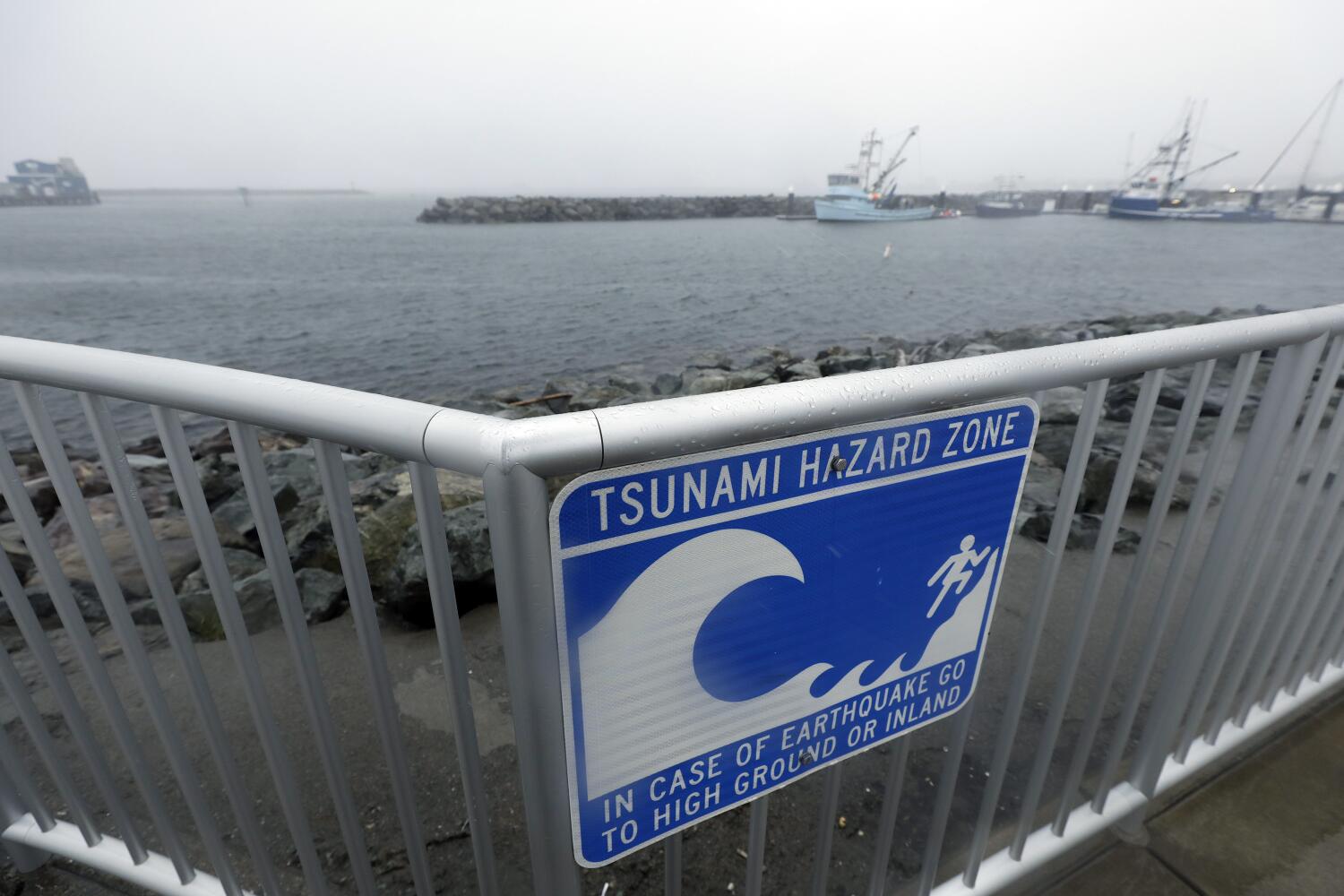-
Braves’ Chris Sale Could Be Out for Season After Unfortunate Update - 11 mins ago
-
Park Avenue Killer Bought Rifle for $1,400 From His Casino Boss - 29 mins ago
-
Jhoan Duran Trade Sweepstakes Gaining Steam As Deadline Nears - 46 mins ago
-
Canada’s Measles Cases Surpass U.S., Alberta Officials Push for State of Emergency - about 1 hour ago
-
Danville, Virginia City Councilman Set Ablaze After Being Doused with Gasoline - about 1 hour ago
-
Angels Make Surprising Trade for Luis Garcia, Andrew Chafin - 2 hours ago
-
Pilots for Army Black Hawk Discussed Changing Course Before Crash - 2 hours ago
-
Pittsburgh Steelers QB Aaron Rodgers Doesn’t Hold Back About Mike Tomlin - 3 hours ago
-
Flights Are Disrupted at Airports Across U.K. After Radar Problem - 3 hours ago
-
Cleveland Browns HC Gives Shedeur Sanders Training Camp Update - 3 hours ago
Tsunami watch for California: What we know, how to prepare

A tsunami watch was issued for the West Coast, including California, after a massive earthquake off the coast of eastern Russia.
Here is what you need to know to prepare:
Guidance
For California, Oregon and Washington state — areas in the tsunami watch area — the public was advised to prepare to take action and stay alert for further information.
Timing
The National Tsunami Warning Center said the tsunami, if it materializes, would reach Fort Bragg in Mendocino County at 11:50 p.m. Tuesday, Crescent City in Del Norte County at 11:55 p.m., Monterey at 12:15 a.m. Wednesday, San Francisco at 12:40 a.m., the Los Angeles Harbor at 1:05 a.m., Newport Beach at 1:10 a.m., and Oceanside and La Jolla at 1:15 a.m.
The tsunami’s first waves, if they arrive, would hit the Oregon coast starting around 11:40 p.m. Tuesday and in Washington state, as early as 11:35 p.m..
Basics
- Evacuate the area by foot and get to higher ground. Don’t get in your car and try to drive away from the hazardous area — evacuating by car could create a traffic jam.
- If you evacuated from a coastal area, stay away until officials permit you to return.
- Do not go toward the coast to watch a tsunami. Tsunamis move faster than a person can run.
- Do not attempt to surf a tsunami. Regular waves flow in a circle without flooding higher areas. Tsunami waves are unpredictable and flood the land like a wall of water.
How to prepare for a tsunami
- Get your local tsunami evacuation map. The California Department of Conservation released updated interactive hazard maps this year, a tool to help plan a safe evacuation route. The new map includes a function that allows users to look up addresses to see if that location is in a designated tsunami hazard zone (highlighted in yellow). Find your specific map at conservation.ca.gov/cgs/tsunami/maps.
- Practice your evacuation route.
- Put together or purchase an emergency “go bag” containing at least 72 hours of supplies.
- Boaters, contact your local harbor master or local officials to learn about your harbor’s tsunami safety protocols.
Tsunami basics
There are two types of tsunamis: a local-source tsunami and distant-source tsunami. The Tuesday quake in Russia was a distant-source event.
A distant-source tsunami is generated by an earthquake from a faraway source. It could take five to 13 hours to arrive here depending on where it originates. In that case, there would be time to issue a warning and for people to evacuate.
Distant-source tsunamis for Southern California typically come from Japan, Chile or Alaska. According to the California Geological Survey, the worst-case scenario would be a tsunami generated from the eastern Aleutian Islands in Alaska. It would take five to six hours to arrive — providing some time for notification and evacuation. When it did arrive, though, it could produce more than one significantly large surge.
A local-source tsunami, or a near-field tsunami, can be generated by sudden movement of offshore faults or underwater landslides. Because this type of tsunami is generated from a nearby source, it could arrive in minutes.
Source link



















